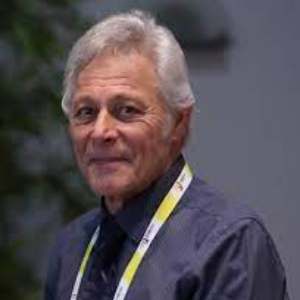Title : Physicochemical characterization of co-crystals and cyclodextrin inclusion complexes of bioactive molecules
Abstract:
Significant reduction or elimination of unfavourable properties of both well-established drugs and new drug candidates (e.g. poor aqueous solubility, thermal instability, hygroscopicity) can often be achieved via relatively simple strategies such as co-crystallization with partner molecules, namely GRAS (generally recognized as safe) co-former compounds to form co-crystals, and with biodegradable macrocyclic oligosaccharide carriers (cyclodextrins, CDs) to produce CD inclusion complexes. Such products may be binary or higher-order (multi-component) systems and can be regarded as ‘supramolecular derivatives’ of the bioactive component.
By varying the physicochemical properties of the respective partner molecules, the structures and properties of the solid products (co-crystals, CD inclusion complexes) can be tuned, leading to e.g. higher effective melting points for low-melting bioactives and resistance to absorption of water vapour (i.e. reduced hygroscopicity). Furthermore, the solid products are designed to be more soluble in aqueous media than the untreated bioactive molecule and in each case the latter molecule is typically linked to its respective partner (co-former or CD) via combinations of ‘soft’ interactions (hydrogen bonds, pi-pi and van der Waals interactions). The reversibility of these linkages ensures that on dissolution of the co-crystal and the CD inclusion complex, they dissociate into their original components, thus liberating the bioactive molecule intact. Significant increase in the solubility of the bioactive molecule (and hence possibly enhanced bioavailability in humans) may result if dissociation of the co-crystal or CD inclusion complex produces high concentrations of the bioactive at sites of absorption.
This presentation focuses on the preparation of co-crystals and CD inclusion complexes containing bioactive molecules and their definitive characterization via a variety of techniques (primarily X-ray diffraction, thermo-analytical and spectroscopic methods), as well as assessment of the extent to which supramolecular derivatisation has resulted in property enhancement. Representative bioactive molecules that feature in the presentation fall into several classes, including those with antioxidant, antilipidemic, estrogenic and antimalarial activities.
Audience take away:
• Awareness of the utility of approaches such as co-crystallization and cyclodextrin inclusion in the treatment of small bioactive molecules (APIs, new drug candidates) to enhance their pharmaceutically relevant properties and performance
• Familiarity with the methodology of solid-state preparation and definitive physicochemical characterization of multi-component systems containing small molecules
• Awareness of potential advantages of implementing such studies on new drug candidates soon after their discovery
The presentation should facilitate entry into the literature on the topic of multi-component systems containing small drug molecules and their potential advantages for drug delivery. The practical approaches to beneficiation of drugs described in the presentation may be applicable as replacements for more complex and/or expensive strategies currently employed.



